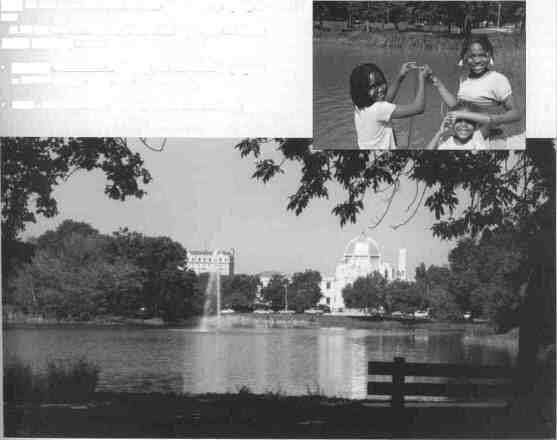 |
Home | Search | Browse | About IPO | Staff | Links |
 |
Home | Search | Browse | About IPO | Staff | Links |
|
P A R T N E R S H I P S
Nature and Chicago
Preserving and promoting the wild side of Chicago are at the heart of a partnership BY KATHERINE McGUIRE When people talk about nature, the city of Chicago doesn't generally spring to mind. But all that is changing with a natural areas program, called "Nature Chicago," spearheaded by the Chicago Park District and the city of Chicago's Department of Environment. Nature Chicago is the vision of Chicago mayor Richard M. Daley and it was initiated in the fall of 1999 as a comprehensive program designed to protect and enhance Chicago's natural areas and to improve the quality of life in every Chicago neighborhood.
The program includes a number of large initiatives such as: • improving natural areas in city parks and along the Chicago River, Lake Michigan and several railroad corridors; • creating an industrial and ecological park on the South Side; and • setting up a new nature program in Chicago Public Library branches. Some of the key programs that the Chicago Park District and Department of Environment are working on to enhance nature in the city include: • building and maintaining 15 self-guided nature trails in city parks with trail guides and interpretative signs showing plant and animal species nearby; • restoring a total of 16 lagoons; • and developing a set of bird guidelines to improve the lakefront habitats for the millions of birds that pass through the city during migration. These improvements not only provide sustainable natural habitats for wildlife, they also create learning opportunities for city-goers. The partners also are focusing on converting abandoned service stations around the city into pocket parks and reclaiming the Chicago River for recreational use by providing canoe launches, renovated docks and riverside walking and hiking paths. These capital programs are essential to improving the quality of life in Chicago, because they increase the amount of open space available for people and provide programming opportunities. To support the physical changes being made in the city and to increase awareness of Chicago as a source of nature for residents, the partners also developed a number of special events designed to market the idea of Chicago as a community with natural areas. Festivals, after-school park programs and volunteer opportunities pertaining to nature and the natural environment occur regularly across Chicago. Nature Week is an annual event to highlight these year-round opportunities. The weeks events have included the "Chicago Bird of Elections," art shows, bike tours, canoe outings, a river cruise, a nature festival in Daley Plaza, a harvest festival at North Park Village Nature Center, bird and nature walks, after- 10 | Illinois Parks and Recreation N A T U R E A N D C H I C A G O A R E S Y M B I O T I C school activities, and a seminar series. The park district and Department of Environment now highlight a wide variety of nature programs throughout the city by producing a quarterly calendar of events hosted by the city, the Chicago Park District, environmental organizations, the Lincoln Park Zoo, the Peggy Notebaert Nature Museum, Chicago's cultural institutions and others. In addition to all of the programming and natural area improvements the city has also implemented a number of initiatives to support the Nature Chicago program. The city has planted wildflowers and other native plants along railroad corridors, to improve habitat and discourage illegal dumping; begun a program to reconstruct aging storm sewers and discharge pipes within a half-mile of Lake Michigan and toughen regulations against water polluters. Keys To Successful Partnerships Working in partnership with any organization takes a lot of coordination and communication. When project managers from differing agencies come to the table with a number of varying goals, it is essential that all parties are able to compromise and make decisions quickly and effectively. In this day and age, that means being able to get in touch with your partners at a moment's notice and come to a consensus as a unit without taking the time to use traditional methods of brokering or arguing an issue. To this end, there are a number of factors that helped make the Nature Chicago partnership a success. • Effectively communicate in planning and execution of the program or initiative through e-mail, radio and traditional methods. • Create a clear vision of the program or initiative and set shared goals. • Develop a plan that utilizes the expertise of staff. • Emphasize the importance of adhering to a time line. • Create a comprehensive marketing/publicity plan for the initiative. • Inform and include the community, advisory groups and interested parties of your plans. •
KATHERINE McGUIRE
Photographs of the Garfield Park lagoon (beiow) and young girls fishing at Humbold Park Lagoon by Brook Collins, Chicago Park District.

July/August 2001 | 11 |
|
|